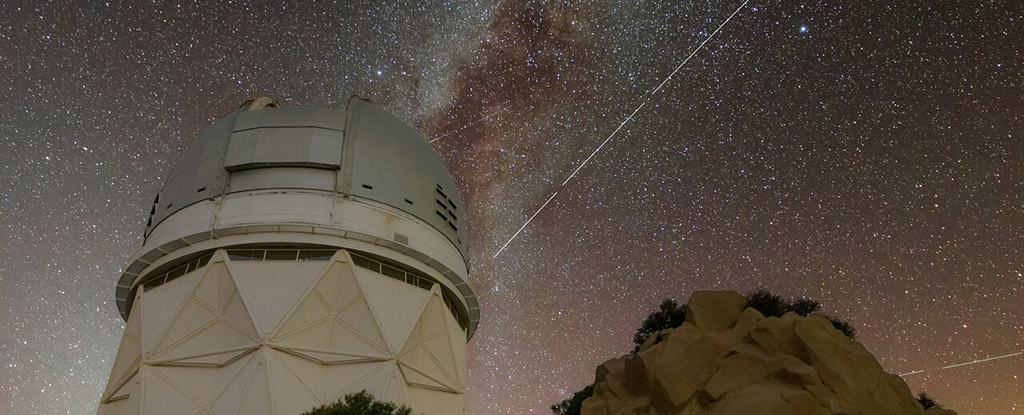Products You May Like
We’re putting more and more satellites into orbit, and along with all the welcome technological and scientific advances that brings, there are also potential problems.
Intended to be the start of an orbiting communications network that can be accessed by standard smartphones, the recently launched prototype BlueWalker 3 satellite is now one of the brightest objects in the night sky.
For experts and enthusiasts who peer out into space, that’s a major issue. While astronomers have a few telescopes high above, many of our observations on the Universe are logged from Earth’s surface.
All but the brightest stars can now be outshone by the satellite’s glare, according to the International Astronomical Union Center for the Protection of the Dark and Quiet Sky from Satellite Constellation Interference (IAU CPS).
“BlueWalker 3 is a big shift in the constellation satellite issue and should give us all reason to pause,” says Piero Benvenuti, the Director of the IAU CPS.
“It’s like exactly what astronomers don’t want,” astronomer Meredith Rawls, from the University of Washington in Seattle, told Science. “It’ll show up as a super bright streak in images and potentially saturate camera detectors at observatories.”
BlueWalker 3 is certainly an impressive bit of hardware. Its 693-square-foot (64-square-meter) antenna array is the largest commercial array in low Earth orbit, capable of reflecting much more light than the SpaceX Starlink satellites, for example.
The intention of parent company AST SpaceMobile is to get more than 100 satellites up in the sky by the end of 2024, many potentially even bigger than BlueWalker 3. That’s a significant worry for scientists.
There’s another concern too: BlueWalker 3 is built to act as a cell phone tower in space, which means it uses terrestrial radio frequencies that might interfere with radio telescopes – telescopes that are currently built well away from areas with mobile phone coverage.
“Frequencies allocated to cell phones are already challenging to observe even in radio quiet zones we have created for our facilities,” says Philip Diamond, Director-General at the Square Kilometer Array Observatory, headquartered in the UK.
“New satellites such as BlueWalker 3 have the potential to worsen this situation and compromise our ability to do science if not properly mitigated.”
Representatives from the IAU CPS and its partners are also keen to acknowledge the potential for satellites to improve worldwide communications, but they want more discussions to happen over the “equitable and sustainable use of space”.
The US Federal Communications Commission (FCC) is responsible for regulating communications networks both within the US and internationally. It has announced plans to open an office dedicated to space, but in the meantime conversations between the IAU CPS and AST SpaceMobile have already started.
“We’re eager to use the newest technologies and strategies to mitigate possible impacts to astronomy,” an AST SpaceMobile spokesperson told New Scientist.
“We are actively working with industry experts on the latest innovations, including next-generation anti-reflective materials.”
